Explore Münster's beauty and history in just one day with our itinerary and audio tour.
Beyond the famous sights, our audio guide unveils the city's hidden secrets and legends as you enjoy a leisurely walk at your own pace. The tour covers over 40 stories and spans 4.7 km. Once activated, you have until the end of the next day to complete your exploration. Take your time to enjoy a coffee, lunch, or a museum visit along the way. There's so much to discover.
WHAT TO EXPECT?
A diverse route:
The tour leads you to renowned landmarks such as Domplatz and the Pablo Picasso Museum, along with hidden treasures like Elbdrostenhof and the St.Clemens Church.
Engaging narratives:
Dive into Münster's rich history and culture. Explore the vibrant Prinzipalmarkt, learn about the city's fascinating past, hear the stories behind the Peace of Westphalia, and uncover the hidden gems of this lively city.
Flexibility:
Stroll at your own pace and pause whenever you wish. You have all day and the next to finish the tour.
Cancellation is possible up to one day in advance.
Convenience:
Download the CityAppTour app and activate the audio tour with the code sent to your email. The app will guide you along the route and remember your progress if you take a break. Play the stories whenever you choose.
TRANSFORM YOUR VISIT TO MÜNSTER INTO AN UNFORGETTABLE ADVENTURE!
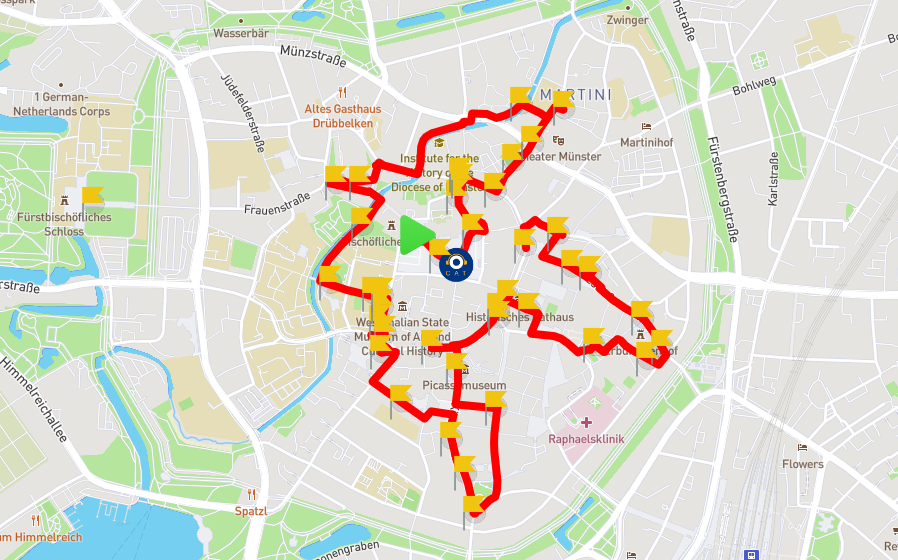
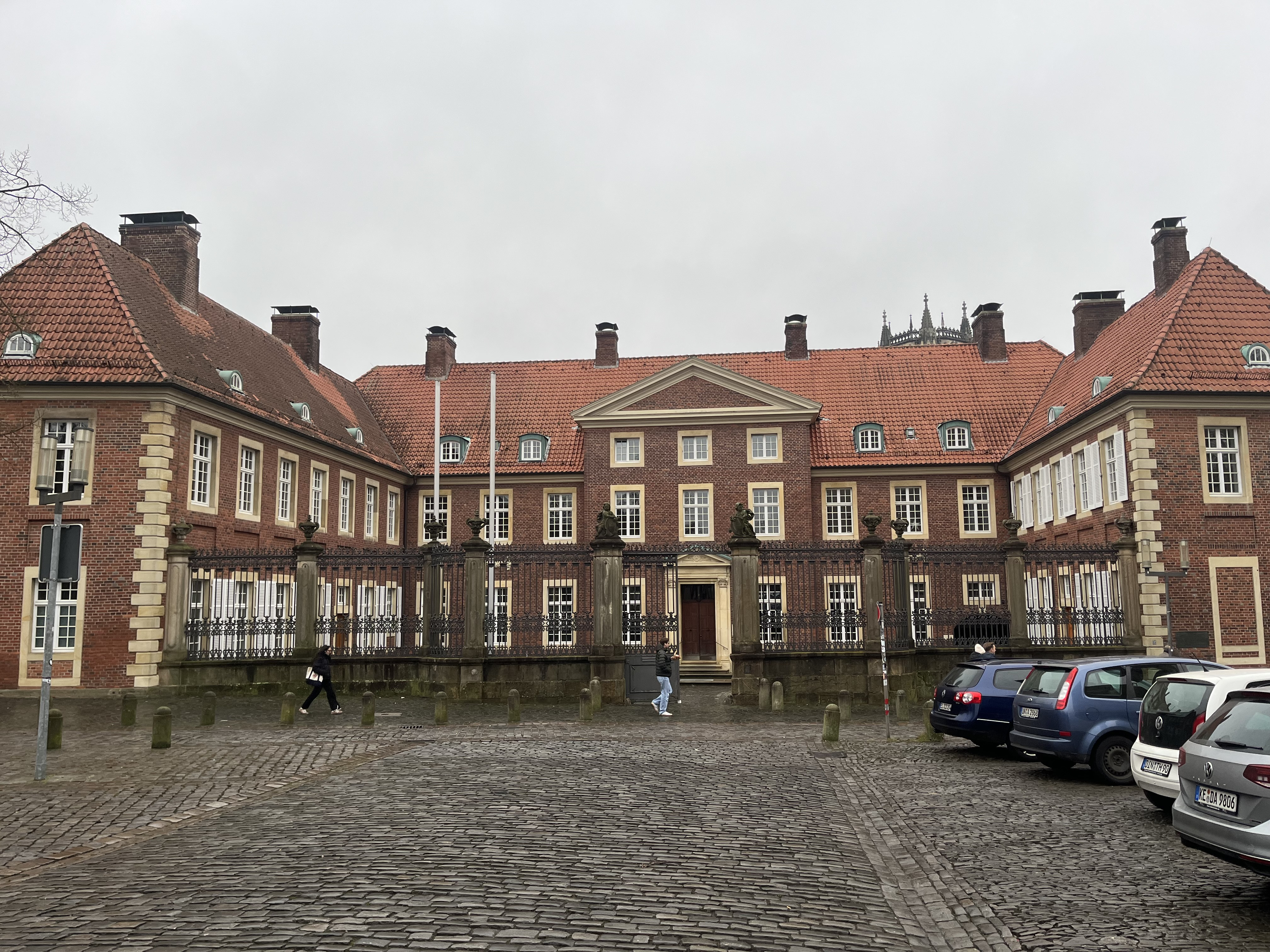
Why Visit: This expansive square anchors Münster's old town, surrounded by medieval architecture that survived Allied bombing through pure luck.
The Gothic St. Paulus Cathedral dominates the space, built on foundations dating to 805 AD. Market stalls fill the square three times weekly, continuing a tradition that began when Charlemagne granted Münster trading rights. The astronomical clock inside the cathedral has tracked time since 1540, with moving figures that still delight children today.
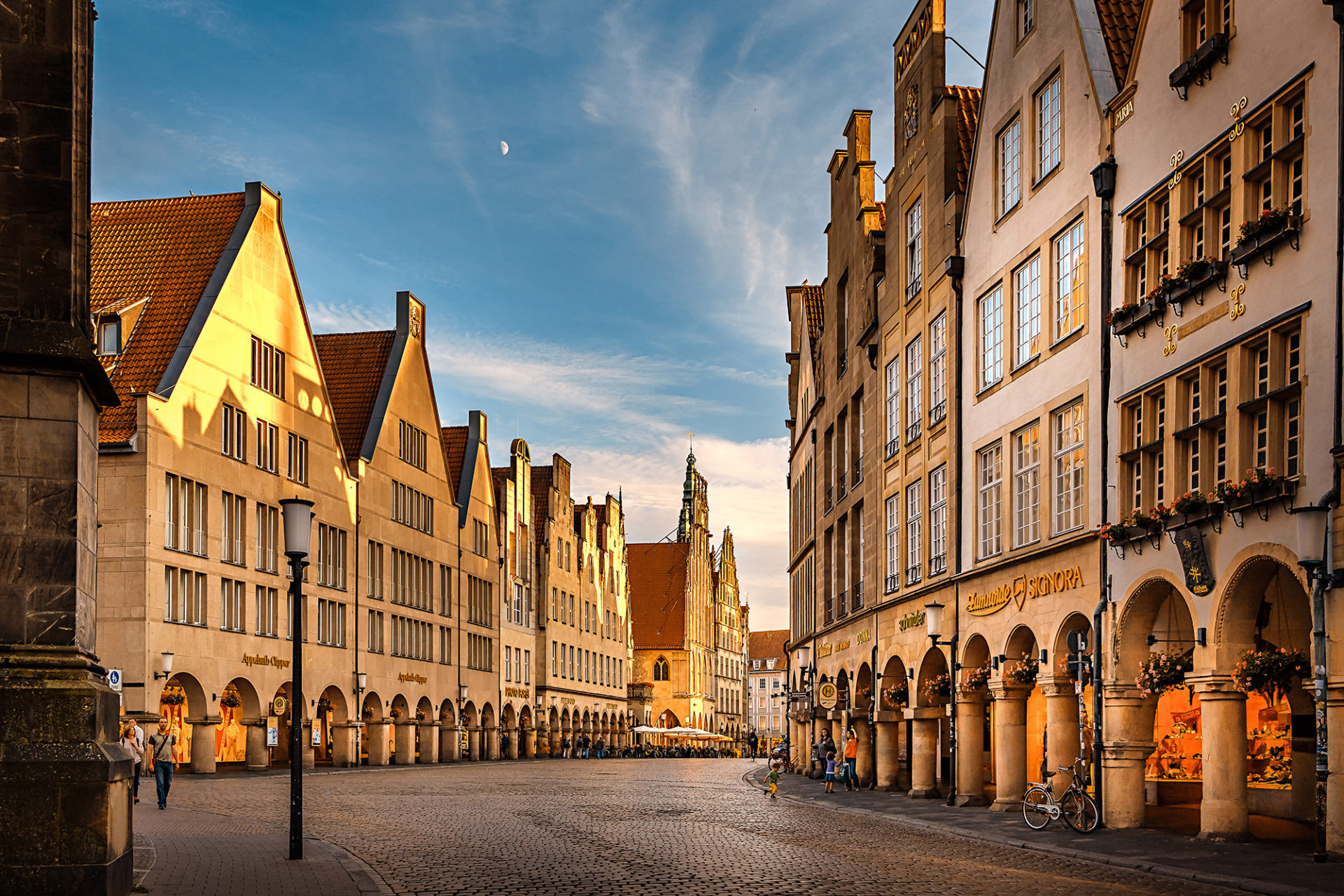
Ever Wondered: Why do these gabled houses look so perfectly medieval when most German city centers were destroyed in WWII?
Münster's merchant families rebuilt their Gothic and Renaissance facades using original plans after 1943 bombing. The covered arcades protected traders for 500 years and still shelter modern shops today. Each building tells stories of Westphalian commerce - from medieval cloth merchants to modern boutiques. The triangular gables create Germany's most photographed market street.
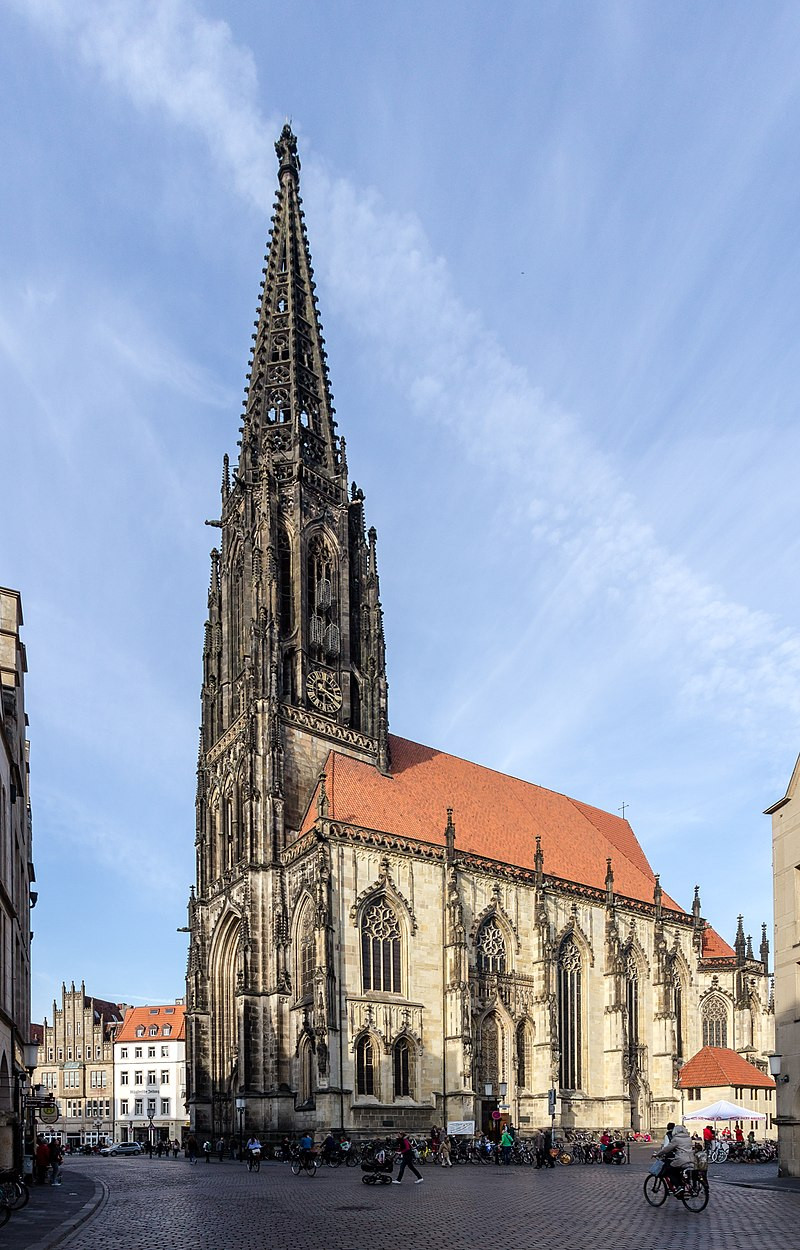
Local Secret: Three iron cages hanging from the church tower once displayed the bodies of Anabaptist rebels who seized Münster in 1534-1535.
The cages remain empty now, but this Gothic church witnessed one of medieval Europe's most radical religious experiments. Jan van Leiden declared himself "King of the New Jerusalem" here, establishing polygamy and communal property. After the city's recapture, the rebels' bodies hung in these cages for decades as a warning.
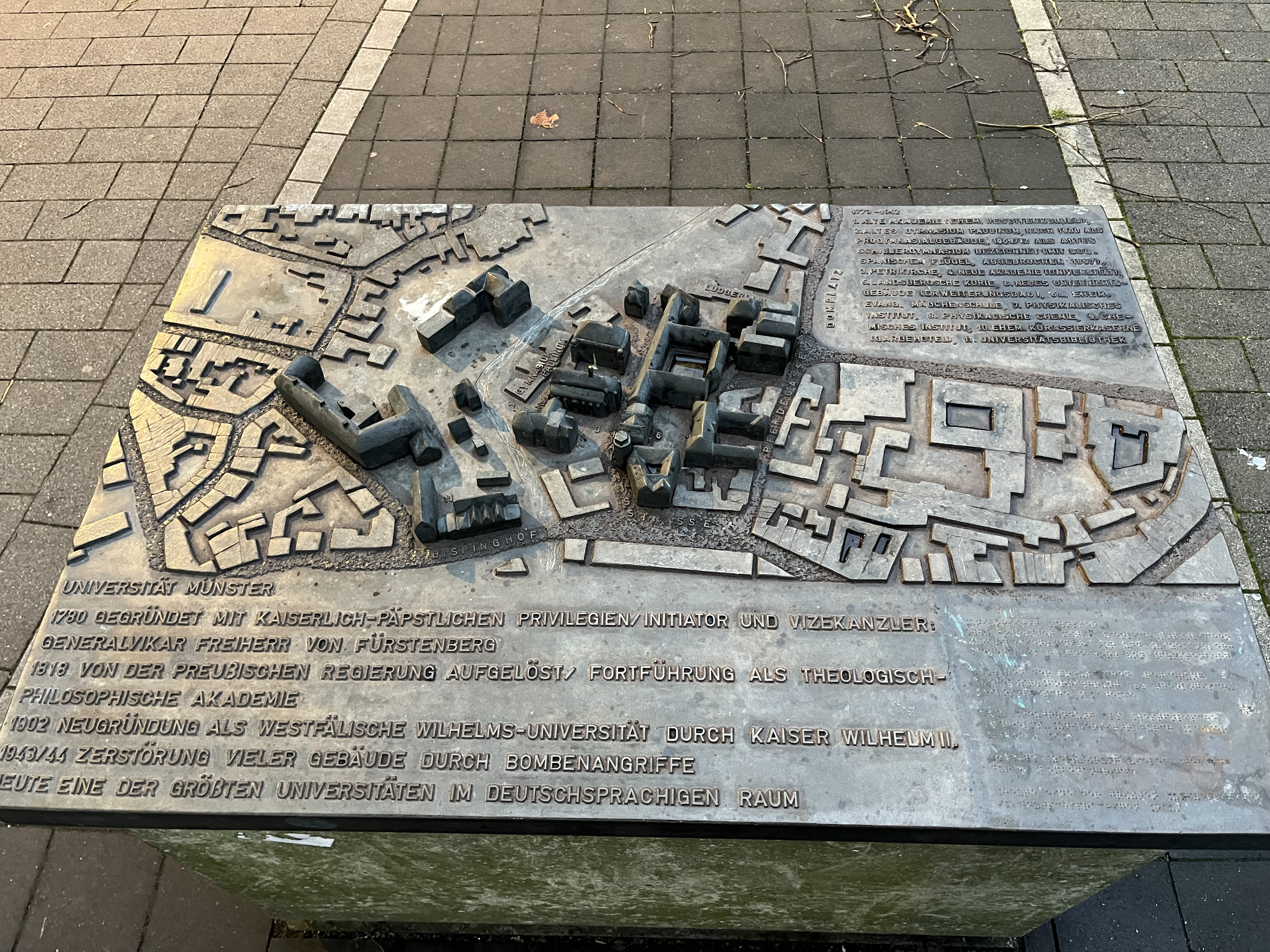
What You'll Find: Germany's third-largest university, founded in 1780, whose 45,000 students make Münster one of Europe's youngest cities by average age.
The baroque palace housing the main university building once served Prince-Bishop Maximilian Friedrich's court. Today's students cycle past the same ornate facades where 18th-century nobility once strolled. The audio guide Münster reveals how this institution survived Napoleon's closure orders and two world wars to become a research powerhouse.
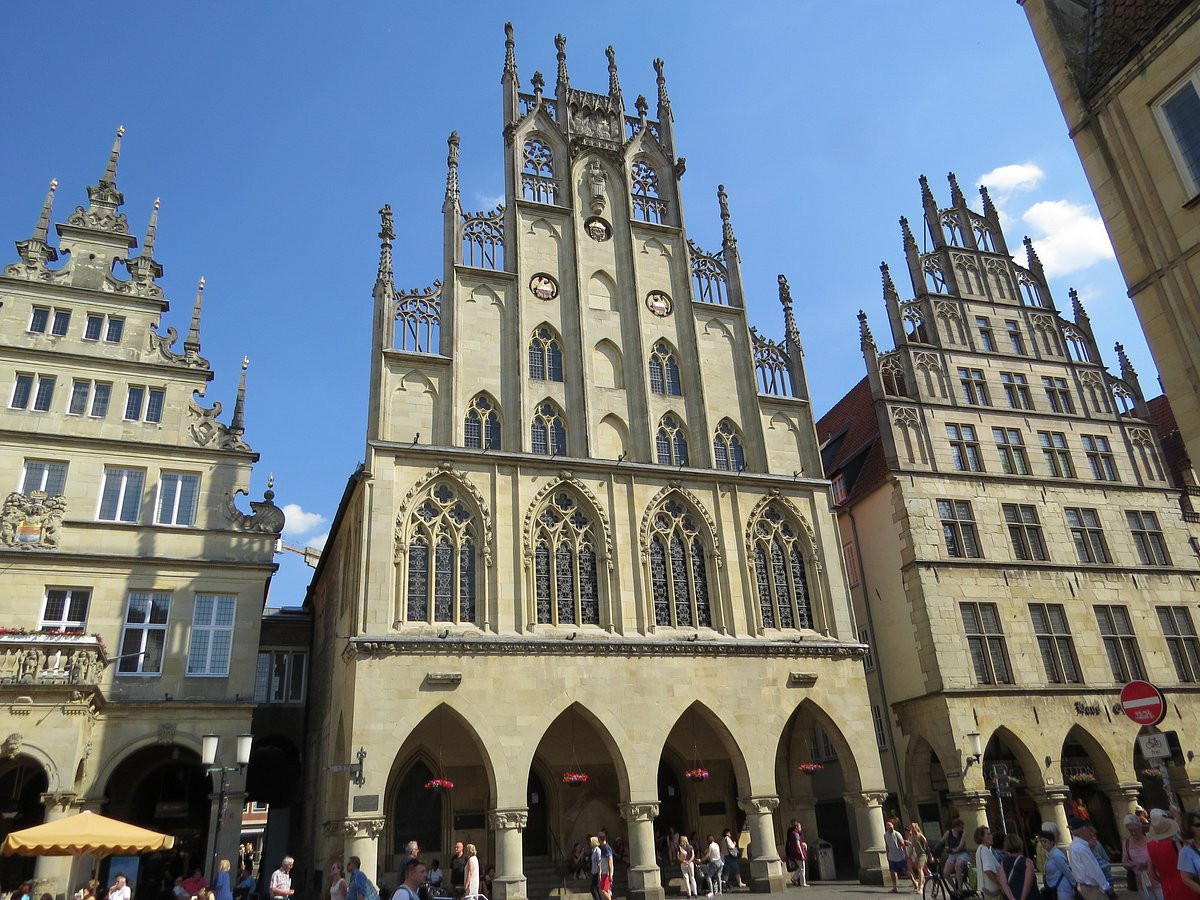
Back in 1648: European diplomats gathered in this Gothic hall to sign the Treaty of Westphalia, officially ending the devastating Thirty Years' War.
The Peace Hall's original furnishings remain largely intact, including the table where Catholic and Protestant negotiators finally agreed to religious tolerance. This treaty established principles of national sovereignty that still govern international law today. The building's stepped gables exemplify Westphalian Gothic architecture at its finest.
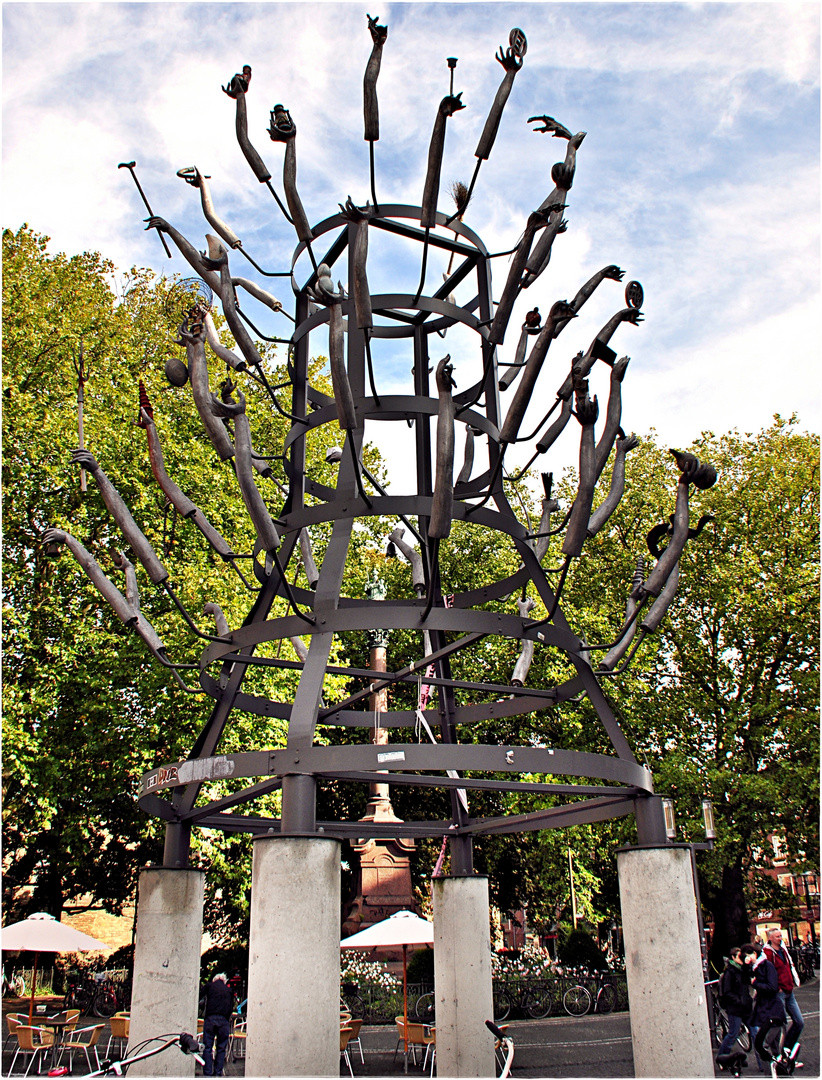
The Story Behind: This 3.2-meter Buddhist sculpture in Münster's city center represents Germany's largest collection of Asian religious art outside major museums.
Local collector Bernhard Schriek donated this impressive Guanyin statue to create cultural dialogue between East and West. The bodhisattva's multiple arms symbolize infinite compassion, each hand holding different symbolic objects. This unexpected Asian artwork in medieval Münster reflects the city's modern embrace of multiculturalism and religious diversity.